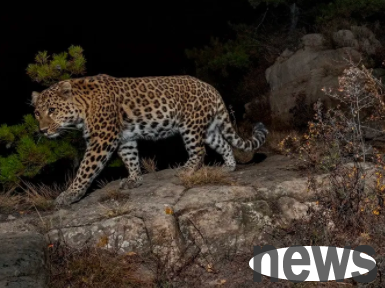All 12 kinds of cats in China are here!
China's complex and changing terrain and climate have created extremely high biodiversity. China is one of the countries with the largest number of wild cat species in the world, with 12 species of cats that are certainly distributed, plus an uncertain whether there is any distribution. What is the current situation of these cats? What efforts have Cat Alliance and other protection agencies made to understand them and help them?

Tiger
First start with the most familiar cat animal - tiger. China has the country with the largest number of tiger subspecies, including Siberian tiger, South China tiger, Bengal tiger and Indochina tiger.
Sizure tiger is the best tiger subspecies in the wild in China. According to the 2024 data released by Siberian Tiger and Leopard National Park, there are 60 wild Siberian tigers in China. The number of Siberian tigers has been increasing in recent years, which shows that our protection is effective.
A wild Indochina tiger was photographed in Xishuangbanna in 2007, and no Indochina tiger was found in China since then. Now Indochina tigers have become extinct in China, Vietnam and Laos, and the only remaining small number of Indochina tigers are distributed in Myanmar and Thailand.
In 2022, a Bengal tiger was photographed in Medogdang Township, Tibet. The Bengal tiger is the largest tiger subspecies with the largest number of wild populations, but it is only distributed in Tibet in China. Today, there is no stable Bengal tiger population in China.
The South China tiger is a real native tiger subspecies. It is very ancient and formed by the late Quaternary Ice Age, the tiger population in the southwest mountainous areas of China gathered with tigers spreading northward in the south.
But the South China tiger has become extinct in the wild. There are now about 200 South China tigers in captivity, and there is a serious genetic decline in inbredness. Tigers need dozens to hundreds of square kilometers of forests and enough large prey. Most of the tiger habitats in history have been developed or the ecosystem has been severely degraded and cannot support tiger survival. A few nature reserves are too small and isolated to support tiger populations.

Leopard
Then our Cat League is particularly concerned about, leopard.
The leopard is the most important predator on the second "stage" of the three-stage terrain in China. In China, except Taiwan, Hainan and Xinjiang, all provinces and municipalities have been distributed in leopards. Today its distribution range has been greatly reduced. Now leopards are mainly distributed in Shanxi, Shaanxi, Hebei, Ningxia, Gansu, Sichuan, Qinghai and Tibet.
China is also the country with the largest subspecies of leopards, including four subspecies: Indochina, Indian leopard, Far East leopard and North China leopard.
The distribution range of Indochia leopards is similar to that of Indochia tigers. There are some Indochia leopards in Yunnan, my country. In 2016, Maomeng and Landscape Nature Conservation Center captured an Indochina leopard in Xishuangbanna, Yunnan.
The Indian leopard in my country is distributed in the Mount Everest region of Tibet, with a small distribution area and we know very little about it.
The Far Eastern leopard, or the Amur leopard, may be the least of all leopard subspecies. According to a paper published in 2018, there are only 84 Far Eastern leopards on the Sino-Russian border. After the establishment of the Tiger and Leopard National Park in my country, the protection has been very effective. There are now more than 60 Amur leopards in China alone living in the Tiger Leopard National Park and surrounding forest areas.
The North China leopard is the most familiar golden leopard in the Central Plains and is the subspecies that our cat alliance pays the most attention to. In the past, there were leopards in Beijing. Mr. Tan Bangjie's article records that more than 30 leopards were killed in Huairou and Miyun in Beijing in the 1950s and 1960s. The last leopard in Beijing was recorded in Fanzipai Township, Miyun, and was killed by a poacher in 1989.
The current "base camp" of the Mao League is Heshun. There are about 40 adult North China leopards living in a range of about 800-1,000 square kilometers. This is already a larger population in the Taihang Mountains, but there are still too few to ensure that a population can be maintained stably. In the forest near Xibaipo, Pingshan County, Hebei Province, from 2019 to the present, one or two spreading leopards can be observed every year. We hope these leopards can spread out, walk north along the Taihang Mountains, and return to their former habitat in Beijing.











